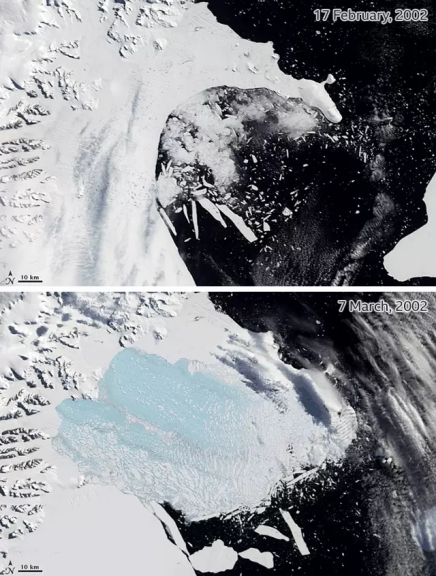
Lead supervisor: Andrew Orr, British Antarctic Survey
Co-supervisor: Oliver Marsh, British Antarctic Survey; Ian Willis, SPRI; Rebecca Dell, Geography
Brief summary:
This project will use satellite imagery, high-resolution atmospheric model simulations, and atmospheric reanalysis datasets to investigate the vulnerability of Antarctic ice shelves to surface melting induced by extreme weather events, which can increase the likelihood of their collapse.
Importance of the area of research concerned:
Meteorological extremes are increasingly being observed around the globe. The vast frozen landscape of Antarctica is especially vulnerable to such extremes (Siegert et al., 2023), and a record-breaking ‘heatwave’ over East Antarctica occurred in 2022. Despite this, relatively little is known about extreme events in Antarctica, and particularly how they can cause increased surface melting of ice shelves. The ensuing meltwater can result in ice-shelf collapse due to hydrofracturing. Such changes are of concern as the collapse of ice shelves can result in inland Antarctic ice flowing into the ocean faster and accelerated sea-level rise. Knowledge gaps include understanding the large-scale and local circulation patterns that occur during high-impact melt events, including the role of remote El-Niño Southern Oscillation (ENSO) forcing. For example, the 2022 heatwave was associated with an atmospheric river, which is a long filament-shaped structure that carries abundant heat and moisture from the subtropics. Another gap is poor understanding of the factors responsible for compound extremes in Antarctica (co-occurrence of multiple extremes) and their associated impacts on surface melt.
Project summary :
An existing database of monthly surface meltwater area from 2013 to 2021 based on Landsat 8 satellite images (Dell et al., 2022) will be used to identify the occurrence of ponded water and slush over Antarctic ice shelves. The dataset will be used to identify episodes / regions of extreme surface melt. Particular attention will be paid to target ice shelves that are known to be vulnerable to temperature extremes / surface melting (Dell et al., 2022; Orr et al., 2023). An existing state-of-the-art high-resolution atmospheric model dataset (Orr et al., 2023) will be used to investigate the local atmospheric circulation patterns that occur during these extreme events. Global atmosphere reanalysis datasets will be used to investigate the role of large-scale and remote forcing, including atmosphere rivers.
What will the student do?:
The student will use the Landsat 8 database to investigate the presence and extent of melt ponds and slush on target selected ice shelves in West Antarctica (e.g., Pine Island), the Antarctic Peninsula (e.g., George VI) and East Antarctica (e.g., Amery) that are particularly vulnerable to prolonged surface melting and temperature extremes. They will further analyze the Landsat 8 and other images for these target ice shelves on daily scales to identify the occurrence of high-impact / low-probability melt events, including compound events. These results will be used together with information from the high-resolution atmospheric model dataset to create a climatology of extremes associated with melt events, focusing on temperature, wind, and precipitation. The model reanalysis datasets will be used to investigate the remote effects and the large-scale and local atmospheric circulation patterns associated with these extremes, e.g., using composite analysis and correlation. For selected melt events that constitute a threat to ice-shelf stability the student will run km-scale atmospheric model simulations to investigate the associated meteorological extremes in detail.
References - references should provide further reading about the project:
Siegert, M. J., and co-authors. 2023. Antarctic extreme events. Frontiers in Environmental Science, vo. 11, doi: 10.3389/fenvs.2023.1229283.
Orr, A., and co-authors. 2023. Characteristics of surface “melt potential” over Antarctic ice shelves based on regional atmospheric model simulations of summer air temperature extremes from 1979/80 to 2018/19. Journal of Climate, vol. 36, pp. 3357–3383, doi: 10.1175/JCLI-D-22-0386.1.
Dell, R., Banwell, A., Willis, I., Arnold, N., Halberstadt, A., Chudley, T., & Pritchard, H. (2022). Supervised classification of slush and ponded water on Antarctic ice shelves using Landsat 8 imagery. Journal of Glaciology, 68(268), 401-414. doi:10.1017/jog.2021.114
Applying
You can find out about applying for this project on the British Antarctic Survey (BAS) page.